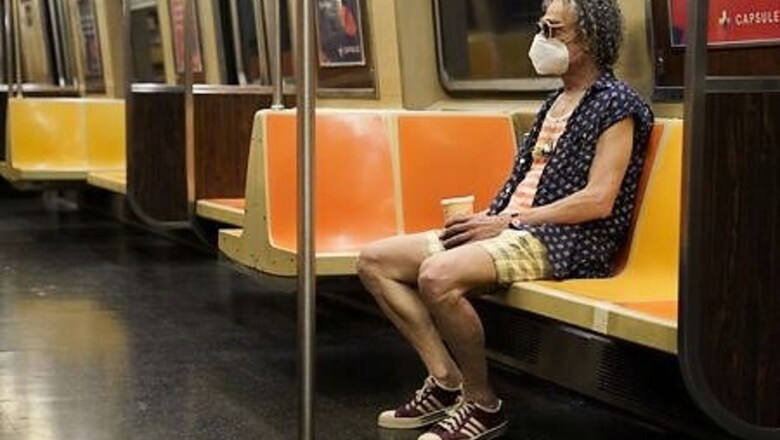
views
New York’s coronavirus-hit Metropolitan Transportation Authority (MTA) will have to start implementing a dramatic job and service reduction plan in November if it does not receive billions of dollars in federal aid, the agency’s chairman said on Thursday.
Speaking in a virtual Reuters Newsmaker event, Patrick Foye said the MTA’s upcoming board meeting in November was the cutoff date for pulling the trigger on a plan to lay off 8,400 workers and cut city subway and bus service by up to 40 percent.
“That is the point at which we would have to begin implementing the service reductions and layoffs,” Foye said, adding that the MTA would also shelve a $51.5 billion capital plan to fix and upgrade North America’s biggest transportation system.
“If we are not able to make those investments, there will be a deterioration in service, as occurred in New York City in the ’70s and ’80s, and we don’t want to go back there,” Foye said.
Foye and John Samuelsen, international president of the Transport Workers Union of America, warned in an opinion article this week in the New York Times that the MTA faced a “five-alarm fire” and called on the U.S. Senate to approve funds to save it.
In July, the MTA unveiled a four-year financial plan that estimated a $16.2 billion deficit by 2024, with more than a third of those losses coming next year, a signal that it does not see ridership, hard hit by the coronavirus pandemic, rebounding significantly anytime soon.
The agency, which runs New York City buses and subways and two commuter railroads that connect the city with suburbs, is losing $200 million in revenue a week and estimates it needs another $3.9 billion in federal aid to get through the end of this year and a total of $10.3 billion through 2021.
In addition to the plunge in revenue, the MTA has had to spend more to clean subway cars, stations and buses to curb the spread of the coronavirus. Subway service, which formerly ran for 24 hours, was closed down from 1 a.m. to 5 a.m. to make that cleaning possible, another hit to ridership.
Even with congressional negotiations on further federal assistance at a standstill, Foye said he still held out hope that the Republican-controlled Senate would approve additional funding for the MTA before the Nov. 3 national election.
“If reason prevails and the national interest is pursued by the Senate, the Republican leadership in the Senate and Washington, the MTA will be financed,” Foye said.
Foye said he was not optimistic there would be any progress this year on congestion pricing, a program that charges vehicles entering Manhattan a fee. The program was supposed to account for $15 billion of the MTA’s capital spending plan, but its rollout has been slowed by the federal government not determining what environmental review is needed.
Foye described the withholding of aid from the MTA and the New York City region as a “punitive” act by Washington, echoing concerns by cities and states run by Democrats that they are being targeted by Republican President Donald Trump.
Foye suggested that the election of Democratic presidential nominee Joe Biden, who has been a frequent rider on Amtrak passenger trains and a supporter of public transportation, might lead to better outcomes for the MTA.
“I believe that he’s got a different view of the importance of mass transit and public transit,” Foye said.
Disclaimer: This post has been auto-published from an agency feed without any modifications to the text and has not been reviewed by an editor




















Comments
0 comment